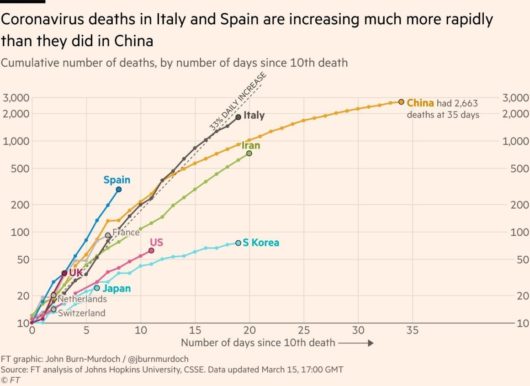What lessons can be derived from the COVID-19 epidemic in China vs Italy? Both nations are relatively well to do. China’s per capital GDP is $16,000 USD and Italy’s is $27,000. China has 2.5 hospital beds per capita and Italy has 4. Both nations have rather dense populations, with China’s average of 377 per square mile, and Italy at 500. The COVID-19 epidemic has severely impacted both nations, albeit Italy later than China. The very first diagnosis in China’s Wuhan province was on Dec 1, 2019, and Italy’s first diagnosis was on Feb 23, 2020.
In contrast to the similarities, important differences between these national epidemics are emerging. The absolute number of COVID-19 cases and deaths in Italy has surpassed that of China, even though Italy’s experience with the disease is far shorter. And, the escalation of COVID-19 in Italy is rising unabated, while that in China is steadily leveling off.
What can account for the differences between these national epidemics? The medical care response in both nations has been generally state-of -the-art, while still only supportive at best. The public health response in both nations, however, has been radically different. The most basic principle of contagious disease control is limiting human contact. China understandably grappled during the first month to understand the disease, and rather quickly imposed quarantine on citizens of most cities. Italy enjoyed a significant potential benefit from viewing the experience of China, but did not begin quarantine until three weeks after the first cases appeared.
For those of us in other nations, what important disease control lessons can be learned from the takeaway of the China and Italy epidemics?

